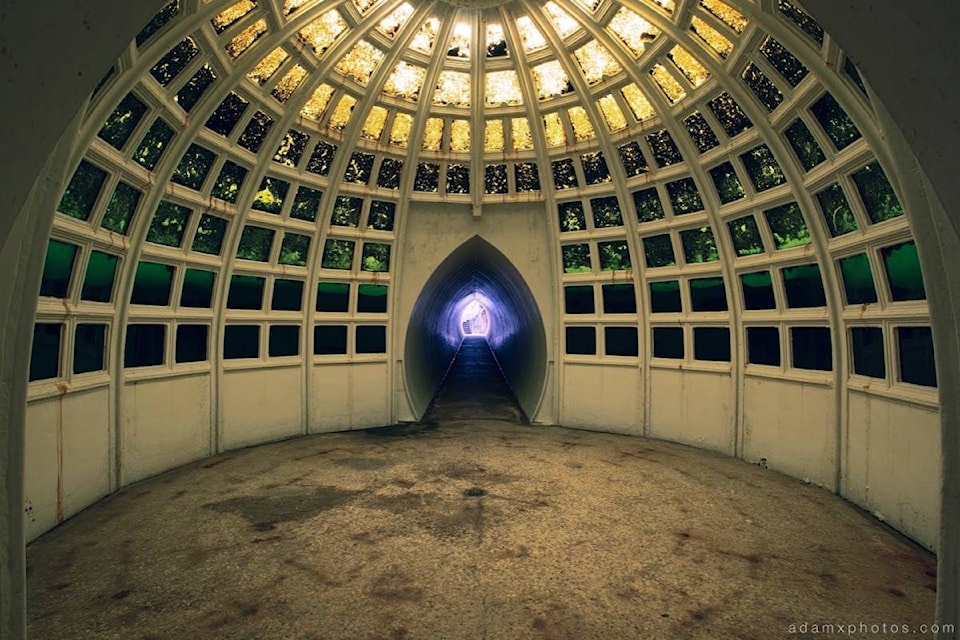As we head into another spring and summer of pandemic, a lot of homeowners are doubtless wondering what projects they can embark on to fill the time. Last year saw countless people clearing out drawers and cupboards that hadn’t seen daylight since the millennium bug was a concern. Many then embarked on those home renovation projects they’d put off for years, or tackled their gardens.
With all those projects completed, what’s left to do in 2021? I have a humble suggestion: follies.
What is a folly, you ask? At its most basic, it’s a building or structure that looks picturesque or decorative, but often serves little purpose whatsoever except to draw the eye and command attention. They are mainly a European thing, usually constructed on large estates. More specifically, they’re often associated with Great Britain, which has a long and proud tradition of whimsical eccentrics, so follies are a natural fit.
Visit any large estate in Britain and you are sure to encounter one or more follies sprinkled about the grounds. I first encountered the delightful tradition of follies at Blenheim Palace in 1981, and immediately fell in love with the idea of these wonderful structures. The more I learned about them, the more I loved them. Why build a modest gazebo when you can build a Temple of the Four Winds (Castle Howard)? A patio umbrella will shelter you from the wind and rain and sun, but why not build a Gothick alcove instead (Painswick Rococo Gardens)? Sure, you could commemorate a famous ancestor by hanging a portrait on the wall, but wouldn’t a 100 foot tall tower with 150 steps leading to the top be a more magnificent token of respect (Hawkstone Park)?
It was Hawkstone Park, and its vast collection of follies spread over a large estate, that inspired me to write a story based on the estate’s rise and fall, which saw the grounds relapse into an overgrown jungle that overtook its follies, one of which was a rustic hermitage complete with a resident “hermit” (an automaton operated by a guide) who dispensed words of wisdom to visitors. Thankfully, the estate and its follies have been lovingly restored, which can’t be said for all follies, some of which have disappeared. I particularly regret the loss of a huge “boulder” that used to block the way to a waterfall at Blenheim. The duke would take guests along the path, and there would be general consternation when visitors saw the obstacle in their way. The duke would wait for a few moments, then activate a hidden lever which caused the boulder — constructed of lightweight material — to swing aside.
By far my favourite folly, however, is the underwater ballroom at Witley Park, which falls firmly into the “you can’t make this up” category (it also slots nicely into the “more money than sense” column). It sits below a placid lake, and the only sign of its existence at ground level is a statue in the lake which seems to walk on water. However, a concealed staircase leads to an interior staircase, which leads to a long tunnel under the lake which ends in a circular room, the domed ceiling of which is made up of rows of thick glass panes. The topmost row is submerged just under the statue, and lets light from the surface into the subterranean chamber. A small island near the statue has another concealed entrance leading to the chamber.
I realize that an underwater ballroom or a 100 foot tower are probably out of the reach of most homeowners’ abilities, but you can always try for a fake Greek or Roman temple, which were popular folly subjects and have the added advantage of looking purposely distressed and/or unfinished. A Blenheim boulder also seems eminently do-able: enlist the kids or grandkids to help make a papier-mâché boulder. It’s a perfect spring break project; just don’t forget to invite me over when it’s done.
editorial@accjournal.ca
Like us on Facebook and follow us on Twitter
